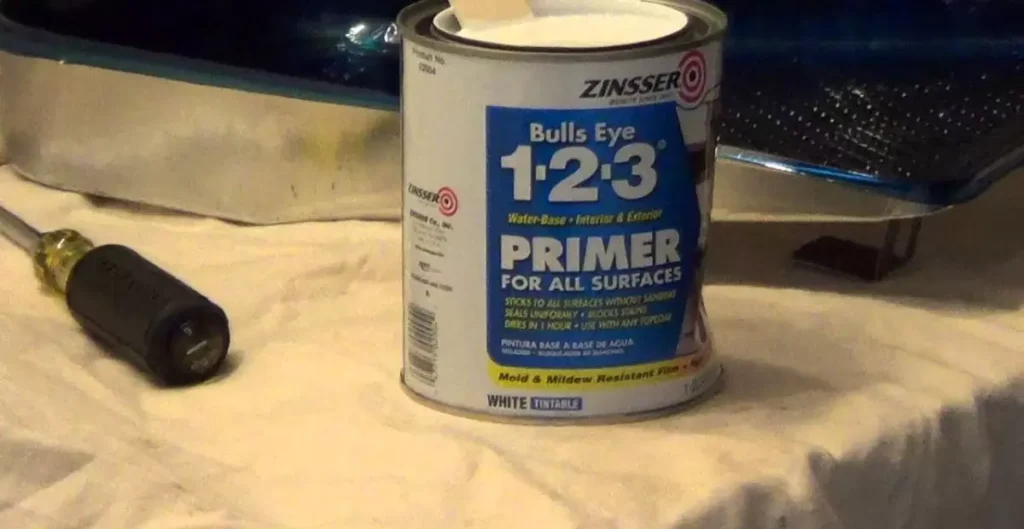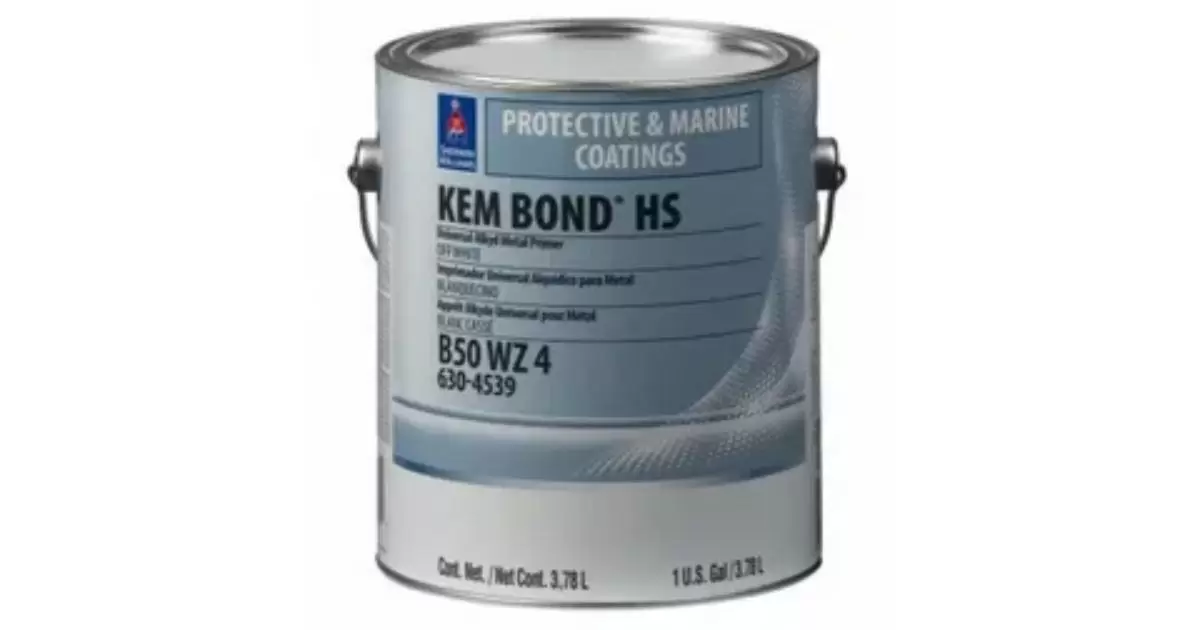A primer, in the context of coatings and painting, is a preparatory substance applied to a surface before the application of the main coating. It serves as a bonding agent, enhancing adhesion between the substrate and the subsequent layers of paint or coating.
Ever wondered, “What primer to use on stainless steel?” Choosing the right primer for stainless steel is essential to achieving optimal results in terms of adhesion, corrosion resistance, and overall durability.
Selecting an appropriate primer for stainless steel involves considering factors like the composition of the stainless steel, the intended use of the coated surface, and the environmental conditions it will face. Some primers are specifically designed for stainless steel, offering excellent adhesion and protection against corrosion.
Significance of Using Primer on Stainless Steel
Priming stainless steel surfaces is a pivotal step in ensuring the longevity and performance of coatings. The primer acts as a foundation, forming a strong bond between the stainless steel substrate and the subsequent layers of paint or coating. Without a proper primer, the adhesion of the coating may be compromised.
Stainless steel’s smooth surface and corrosion-resistant nature make it imperative to use a primer specially formulated to adhere effectively to this material. The application of a high-quality primer on stainless steel not only enhances adhesion but also provides a protective barrier, preventing corrosion and increasing the overall durability of the coated surface.
Key Considerations for Choosing the Right Primer for Stainless Steel
Selecting the appropriate primer to use on stainless steel involves a thoughtful evaluation of various factors to ensure optimal results. The composition of the stainless steel, environmental conditions, and the intended use of the coated surface are crucial considerations. Primers specifically designed for stainless steel offer superior adhesion and corrosion resistance.
When choosing a primer to use on stainless steel, it’s important to take into account the characteristics of the material, such as its smooth surface and resistance to corrosion. Compatibility between the primer and the stainless steel substrate is key to achieving a successful coating application.
Factors Influencing Primer to Use on Stainless Steel
When it comes to choosing the right primer for stainless steel, various factors come into play, each significantly influencing the performance of the coating. The surface preparation is a critical factor, as primers adhere better to clean and properly treated stainless steel surfaces.
Any contaminants or oxidation must be thoroughly removed to ensure optimal adhesion. The environmental conditions where the stainless steel is located play a crucial role. Primers must be selected based on the expected exposure to factors such as humidity, temperature, and corrosive elements.
Characteristics of Stainless Steel and Their Impact on Primer Selection
The unique characteristics of stainless steel demand careful consideration when selecting the appropriate primer. Stainless steel is known for its corrosion resistance, which is a key factor in determining the type of primer needed. Primers designed for use on stainless steel are formulated to bond effectively with its smooth surface, providing an even and durable foundation for subsequent coatings.
The alloy composition of the stainless steel also influences primer selection, as different formulations cater to specific alloys. Understanding these characteristics is paramount to making informed choices. Ensuring the selected primer complements the inherent properties of stainless steel, leading to a successful and enduring coating application.
A Crucial Decision for Long-Term Durability
Choosing the right primer to use on stainless steel is a pivotal decision when aiming for long-term durability in coating applications. Primers serve as the foundation for any paint or coating system, and their compatibility with stainless steel is paramount. The wrong choice can lead to adhesion issues, premature wear, and corrosion problems.
To ensure lasting protection, opt for primers specifically formulated for stainless steel surfaces. These primers provide a strong bond, enhancing the adhesion of subsequent coating layers and contributing to the overall resilience of the system. By making the right decision at this critical stage.
Understanding the Corrosion Resistance Benefits of Specific Primers
When it comes to stainless steel, understanding the corrosion resistance benefits of specific primers is essential for maintaining the material’s integrity over time. Stainless steel is prized for its resistance to corrosion, but without the right primer, its longevity can be compromised. Specific primers for stainless steel offer a protective barrier against corrosive elements, safeguarding the metal beneath the coating.
These primers create a resilient shield, preventing rust and deterioration even in challenging environments. By comprehending the corrosion resistance properties of various primers, you can make an informed choice that not only enhances the aesthetic appeal of stainless steel.
Tailoring Choices Of Primer to Use On Stainless Steel Variations

Choosing the right primer for stainless steel involves a nuanced understanding of the material’s diverse variations. Different grades of stainless steel possess unique chemical compositions and surface characteristics, impacting the adhesion and performance of primers. Austenitic stainless steel, known for its corrosion resistance, may require a primer with enhanced bonding capabilities.
Use primers tailored to their surfaces, consulting compatibility charts for optimal choices. Removing paint from stainless steel poses challenges, particularly with ferritic or martensitic grades. Simplify decisions for a flawless paint-stripping process.
Table: Primer Compatibility Chart for Stainless Steel Grades
| Stainless Steel Grade | Recommended Primer Type |
| Austenitic | Bonding-Enhanced Primer |
| Ferritic | Surface-Specific Primer |
| Martensitic | Adhesion-Optimized Primer |
Practical Tips for Successful Application of Primer on Stainless Steel
Achieving a successful primer to use on stainless steel involves careful preparation and application techniques. Before starting, ensure that the stainless steel surface is thoroughly cleaned and free from contaminants, as any residue can compromise primer adhesion. Use a mild solvent to remove oils, grease, or any other impurities that might be present.
When applying the primer, follow the manufacturer’s guidelines regarding the recommended thickness and drying times. Applying multiple thin coats rather than one thick layer can enhance adhesion and overall coating durability. Consider environmental factors such as temperature and humidity, as they can influence the primer’s drying and curing times.
FAQs
Can I use any primer on stainless steel, or do I need a specific type?
Selecting a primer tailored to stainless steel is crucial for optimal adhesion and long-lasting protection. General-purpose primers may not address the unique properties of stainless steel.
What happens if I skip the primer when coating stainless steel?
Skipping the primer on stainless steel can lead to poor adhesion, reduced corrosion resistance, and premature coating failure. The primer acts as a crucial bonding layer for the coating system.
How do I know which primer is suitable for the grade of stainless steel I have?
Consult a primer compatibility chart to match the specific characteristics of your stainless steel grade with the recommended primer type. Tailoring your choice ensures effective adhesion and enhanced protective performance.
Conclusion
In the world of stainless steel coating, choosing the right primer is like finding the perfect foundation for a lasting masterpiece. The selection process involves understanding the nuances of different stainless steel variations and tailoring your choice accordingly. By acknowledging the importance of primer in enhancing adhesion, combating corrosion, and ensuring durability.
Next time you ask, “what primer to use on stainless steel?” It’s not just a question, it’s the key to unlocking the full potential of your stainless steel surfaces. Armed with knowledge and a strategic approach, you’re ready to embark on a coating journey that not only beautifies but also safeguards your stainless steel investments for the long haul.

